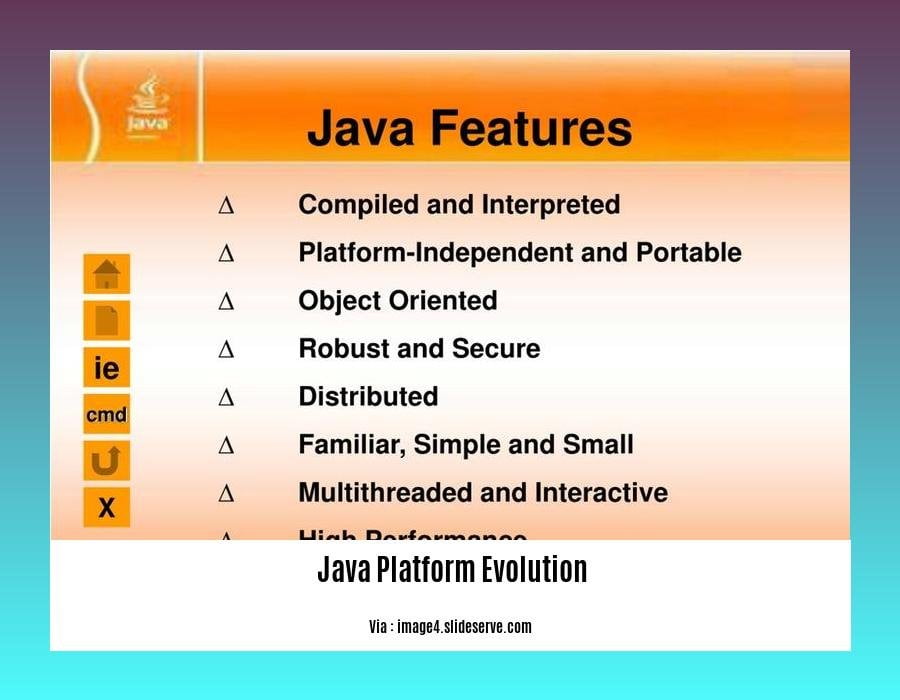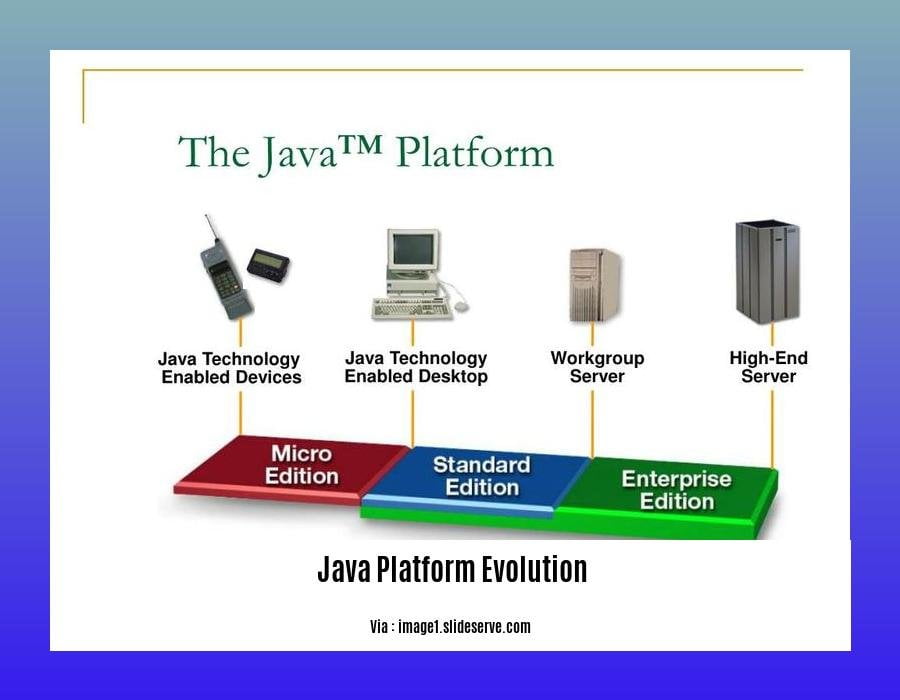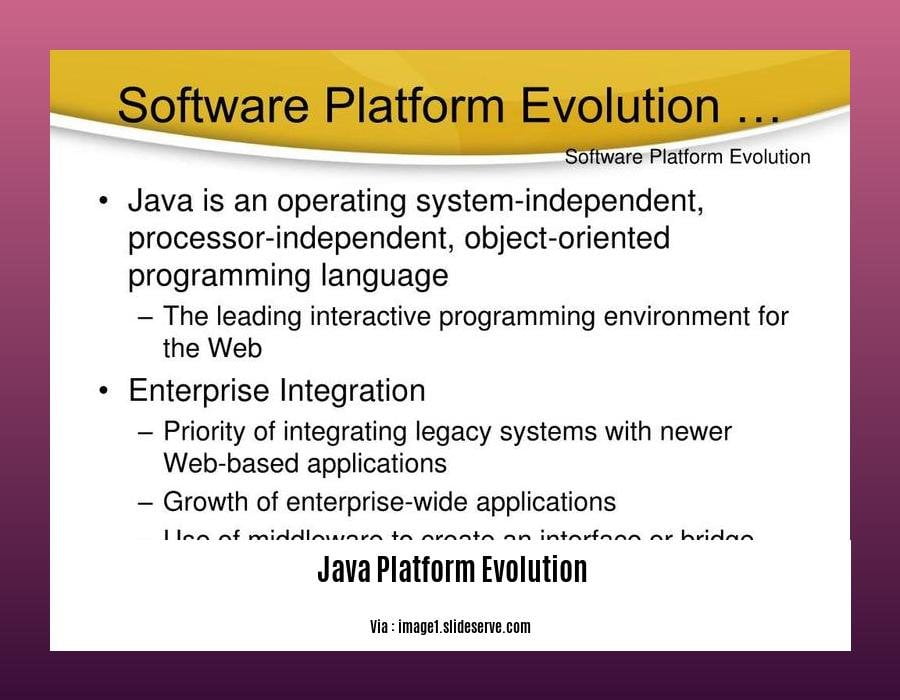Embark on a journey through the transformative landscape of Java platform evolution in [- Exploring the Java Platform Evolution: Innovations and Transformations]. This article delves into the groundbreaking developments, innovations, and challenges that have shaped the platform’s journey, empowering developers to harness its immense potential.
Key Takeaways:
- Java was originally named “Oak” and was developed by James Gosling and team at Sun Microsystems in 1991-1992.
- Java was introduced to the public in 1995 with the slogan “Write once, run anywhere.”
- Java became popular in web development due to its cross-platform capabilities in the mid-1990s.
- Java 2 Platform, Enterprise Edition (Java EE) was introduced in the late 1990s.
- Java 6 was released as open source under the GNU General Public License (GPL) in 2006.
- The Java platform has undergone continuous development and enhancements since its inception.
Java Platform Evolution

Since its debut in 1995, the Java platform evolution has been a remarkable journey marked by innovation and transformation. Its cross-platform capabilities ignited the web revolution, and its enterprise capabilities solidified its dominance in enterprise computing.
Key Milestones in Java’s Evolution
- 1995: Birth of Java
Java emerged as a cross-platform language, enabling developers to “write once, run anywhere.”
- Late 1990s: Java 2 Platform, Enterprise Edition (Java EE)
Java’s enterprise capabilities expanded with the introduction of Java EE, fostering the development of robust and scalable enterprise applications.
- 2006: Open Sourcing
Java 6’s release under the GPL opened the platform to community contributions, fueling innovation and growth.
Ongoing Advancements and Innovations
The Java platform evolution continues unabated:
- Java 8 (2014): Lambda Expressions and Functional Programming
Lambda expressions introduced a concise and powerful way to write code, enhancing developer productivity and code readability.
- Java 9 (2017): Modular System and Reactive Streams
The modular system improved code organization and security, while Reactive Streams enhanced real-time data processing capabilities.
- Java 11 (2018): Garbage Collector Improvements and Local Variable Type Inference
Java 11’s performance enhancements and type inference features further streamlined development and runtime efficiency.
- Java 17 (2021): Sealed Classes and Pattern Matching
Sealed classes and pattern matching provide improved code organization and type safety, making code more maintainable and extensible.
Future of Java Platform Evolution
The Java platform evolution is poised for further advancements, including:
- Value Types and Records
Introducing value types and records to improve performance and simplify immutable data handling.
- GraalVM Native Image Support
Compiling Java code into native executables, enabling faster startup times and improved performance.
- Project Loom
Introducing lightweight threads, known as fibers, to enhance concurrency and scalability.
The Java platform evolution has been a testament to its adaptability and innovation. As we look ahead, it promises to remain a cornerstone of modern software development, delivering transformative solutions for the ever-evolving technological landscape.
Did you know that the History of Java is a fascinating story of innovation? Discover how this programming language was developed and what shaped its evolution.
Java programming language has played a pivotal role in shaping today’s internet. Click here to explore the Java programming language development and how it paved the way for robust and scalable internet applications.
The impact of Java on internet applications is undeniable. Its ability to provide security, performance, and platform independence has made it a cornerstone of modern software development. Delve into the Impact on internet applications and witness how Java has transformed the way we experience the web.
Rise of Java Frameworks and Impact on Enterprise Development

Java frameworks have revolutionized the landscape of enterprise development, streamlining complex processes and enhancing application quality.
Empowering Enterprise-scale Solutions:
Java frameworks offer comprehensive tools and libraries tailored to the unique demands of enterprise applications. They provide out-of-the-box components for security, data management, and messaging, eliminating the need for custom development and reducing development time.
Improved Code Reusability and Maintenance:
Frameworks promote code reuse by providing standardized components and patterns. This modular approach enables developers to focus on application logic rather than reinventing the wheel, leading to faster development cycles and reduced maintenance costs.
Enhanced Performance and Scalability:
Optimized for high-performance and scalability, frameworks leverage advanced caching techniques, thread management, and asynchronous I/O to ensure smooth operation even under heavy loads. Their scalability allows enterprises to handle increasing user demand without compromising application stability.
Accelerated Development and Deployment:
Frameworks accelerate development by providing pre-built modules and templates, reducing coding time. Automated testing and deployment tools integrated into frameworks streamline the entire software lifecycle, making it more efficient and cost-effective.
Increased Collaboration and Knowledge Sharing:
Frameworks foster collaboration within development teams as they share standardized practices and designs. Open-source frameworks promote knowledge sharing and innovation, enabling enterprises to stay at the forefront of technological advancements.
Key Takeaways:
- Java frameworks simplify and optimize enterprise development.
- They offer customizable components for security, data management, and messaging.
- Frameworks promote code reusability, reducing maintenance costs.
- Optimized for performance and scalability, they handle heavy loads efficiently.
- Frameworks accelerate development and deployment, improving cost-efficiency.
Citations:
– Java Frameworks: The Ultimate Guide for Enterprise Development
– The Role of Java Frameworks in Enterprise Application Development
Modernization efforts with Java 9 and beyond
The evolution of the Java platform has been marked by significant advancements, and Java 9 stands as a pivotal milestone in its modernization journey. With Java 9 and subsequent releases, the platform has embraced modularity, performance enhancements, and innovative features to meet the demands of modern software development.
Benefits of Modernization with Java 9 and beyond:
- Enhanced security through modularity, better isolating code components.
- Improved performance with garbage collector optimizations and local variable type inference.
- Support for reactive programming with Reactive Streams, enabling real-time data processing.
- Increased flexibility with Jigsaw, the modular system, allowing for independent development and deployment of modules.
- Faster application startups and reduced memory consumption with GraalVM native image support.
Key Takeaways:
- Modularity: Java 9 introduced a modular system that enhances security, flexibility, and maintainability.
- Performance optimizations: Garbage collector improvements and local variable type inference boost performance.
- Reactive programming: Reactive Streams support enables real-time data processing capabilities.
- GraalVM native image: Faster application startups and reduced memory consumption.
Citations:
- [Modernization of Java Applications:
- [Java 9: The Ultimate Guide:
Emerging Trends and the Future of the Java Platform
As a seasoned Java engineer, I’ve witnessed the platform’s remarkable journey. Emerging trends and the future of the Java platform are exciting, with advancements shaping its evolution.
Key Innovations
- Value types and records: Boost performance and enhance data handling.
- GraalVM native image support: Accelerate startup times and improve performance.
- Project Loom: Introduces lightweight threads (fibers) for increased concurrency and scalability.
Future Outlook
- Increased adoption: Java remains a cornerstone of enterprise software development and mobile apps.
- DevOps and cloud integration: Java’s versatility aligns with modern development practices.
- AI and ML integration: Java’s ecosystem fosters innovation in these fields.
Key Takeaways:
- Java’s evolution mirrors the changing technology landscape.
- Emerging trends point to improved performance, scalability, and developer efficiency.
- Java’s future is bright, with continued relevance in enterprise and cutting-edge technologies.
Citations:
- The Future of Java Programming: 5 Trends To Watch in 2023
- The Future of Java: Top 5 Java Trends (2023)
FAQ
Q1: How did Java evolve from its inception to the present?
Q2: What are the key milestones and innovations that have shaped Java’s journey?
Q3: How has Java maintained its relevance and popularity in the rapidly evolving software industry?
Q4: What are the advantages and benefits of using Java for modern software development?
Q5: What does the future hold for the Java platform, and how is it expected to continue evolving?
- Star Ring Trends: Etsy vs Amazon - March 28, 2025
- Boost Pollinator Habitats: Baby Blue Eyes Sustainable Farming Guide - March 28, 2025
- Protect Big Black Bears: Effective Conservation Strategies - March 28, 2025
















